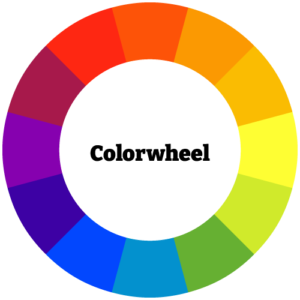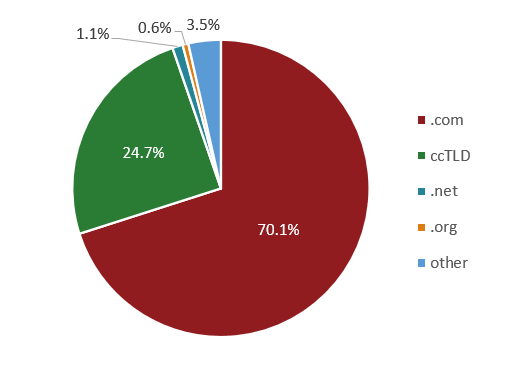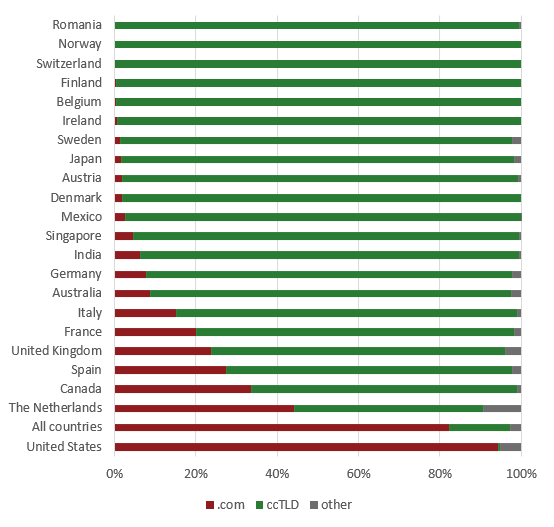Add your feed to SetSticker.com! Promote your sites and attract more customers. It costs only 100 EUROS per YEAR.
Pleasant surprises on every page! Discover new articles, displayed randomly throughout the site. Interesting content, always a click away
Quickmedia
Digital Marketing Solutions – Data-based results with proven ROIChoosing the right colors for your e-commerce store 2 May 2022, 6:05 pm
To showcase your brand to its full potential, you must have carefully planned out strategies and reviewed several marketing tactics. However, have you paid enough attention to the color scheme of your online brand?
The color scheme of a brand can play a vital role in elevating the brand’s value as it plays a major role in its visibility.
The objective of this article is to provide you with a brief overview of the tips for selecting colors along with their psychological impact on an individual.
Tips to select the right colors for an e-commerce store
For your e-commerce store to gain online recognition, you must give enough thought as to what color scheme you choose. Here are a few aspects to keep in mind while making your decision:
1. Consider the overall demographic
Understanding your audience is essential in order to be clear about the first impression you want to make on them. Which services and products do you offer and what emotions do you hope to evoke in customers?
As the most important factor to increase your e-commerce store’s visibility, color selection can make or break the value of your brand.
Selecting the right color isn’t easy. Be sure to think about gender and age groups in your research. The study by Joe Hallock finds that blue is the most preferred color by both men and women, while brown is the least preferred color.
In addition, color preferences change with age. If your goal is to market to a specific age group, then you should consider the color that stimulates their emotions and feelings. In Faber Birren’s book, he reveals that blue is the favorite color of all age groups. Nevertheless, these likes and dislikes differ geographically, and are in constant transition.
2. Decide how many colors to use
Choosing the right primary color is not the only challenge. Another challenge that comes up is how many colors to use and what should be the division of each of them.
Well, a rule commonly referred to as the 60-30-10 rule may be of help to resolve this dilemma. According to this rule, one should consider 60% of the dominant color, 30% of the secondary color, and 10 % of the accent color.
Consider the base colors that will assist in evoking the right emotions in your target audience. To choose a secondary color, you can conduct A/B testing. It should blend well with the primary color.
Finally, accent colors serve to grab attention and even though they have a minimal percentage, they are very important to prompt action. Such colors should stand out immediately against the other two. For example, the use of yellow as an accent color in conjunction with black and white.
3. Consider user experience
Customer experience is the top priority for any entrepreneur or digital marketer. Thus, when selecting color schemes for your page, you should consider what effect you wish to achieve.
Color schemes influence the overall branding of the company. If your store doesn’t meet visitors’ expectations, then that could be a great turn-off for your potential customers.
Using colors that are easy to read can improve the user experience. Similarly, use soft background colors, instead of colors that are just striking.
For your business to grow, you need a balance of colors that appeal to all types of visitors.
4. Apply color psychology
Colors have a direct impact on marketing and sales. Therefore, choosing the right colors for your brand’s identity is crucial for increasing conversion rates.
Emotions tend to influence the buying decision most of the time. Therefore, one should look for colors that go well together and compel the audience to purchase by making them feel welcome.
To prompt your visitors to take an action, your CTA buttons should be bright and noticeable. To push the audience down the sales funnel, you should pay attention to the psychological implications of each color, instead of personal preferences.
Blue is a color Walmart uses for its CTA, and Amazon prefers yellow. Yellow grabs the attention quickly, while blue evokes trust.
5. Consider the color wheel
The color wheel can ease your process when it comes to finding the right color scheme for your store. This will help you decide how colors complement one another.

Figure 1: Colorwheel – A helpful tool for choosing the right colors
You can experiment with different color schemes to see which one works best. Following are a few schemes to look out for:
- Complementary: Using colors that are opposite each other.
- Analogous: Using colors adjacent to each other.
- Triad: The use of three colors equally spaced along a circle.
- Split-Complementary: Using two colors that are standing next to each other and a third, which stands opposite these two.
- Rectangle (tetradic): Use two pairs of colors that are opposite each other.
These simple yet very useful schemes are of huge help to make your e-commerce store look visually appealing.
6. Consider cour industries and products
About 80% of people identify their favorite brands by their color. As a marketer, you must take into account your niche and the competition. The colors used in the logo must appeal to your audience, and the schemes should accurately represent your brand.
For instance, if your business deals in recycled products, you can use a combination of blues and greens. In the same manner, black and gold are essential when selling luxury products.
The other way is to not rely on the norm but instead experiment with different approaches to stand out in your industry. To know how your potential audience will perceive the change, you’ll have to try and test different schemes.
Consider exploring and observing other stores to get a better understanding of the dos and don’ts of your e-commerce store scheme.
The Interpretation of colors
Empowering your customers with the right emotions helps you establish brand familiarity and trust. Here are five popular colors and the vibe they emit.
Red
The red color is associated with passion and love. It evokes extreme emotions. It helps to encourage appetite thus used by restaurants. It causes emotions like:
- Courage
- Energy
- Attention
Red is the primary color used by brands like Coca-Cola, Netflix, Toyota, and H&M.
Blue
The blue color represents calmness and serenity. It also creates a sense of trust in the brand. Mostly used by corporate businesses to improve the performance of individuals, it evokes emotions like:
- Responsibility
- Peace
- Productivity
Companies like Twitter, Dell, Pepsi, and LinkedIn utilize this cool color in their branding.
Green
Green is a very soothing color. Often associated with tranquility, money, health, and nature. It represents growth and harmony. It stimulates emotions like:
- Sustainability
- Reliability
- Security
Starbucks Coffee, Spotify, Tropicana, and Android logos are of green color.
Yellow
Yellow is instantly recognizable. This color stimulates mental activity. It gives the impression of hope and warmth. It’s a great choice to grab the attention of window shoppers. It elicits the emotions like:
- Motivation
- Positivity
- Happiness
Yellow is the color of choice for IKEA, Nikon, CAT, and McDonald’s.
Black
Black is the color associated with luxury and prestige. This color shows confidence and can be felt attractive. It is indeed a versatile color. It evokes the sense of:
- Timelessness
- Power
- Sophistication
Uber, Adidas, Gucci, and PRADA all choose classic black as their brand colors.
Conclusion
Your e-commerce store’s marketing and branding have a great deal to do with color schemes. It can have a far greater impact on your audience and sales than you might think.
Nevertheless, there isn’t a one-size-fits-all solution because not everyone perceives colors in the same way. Understanding the psychology behind each color helps you to build a stronger emotional bond with your target audience.
Unsure which color fit your brand best? Get in touch with us and let one of our experts help you make a decision.
The post Choosing the right colors for your e-commerce store appeared first on Quickmedia.
Domain extensions: .com vs ccTLDs in ecommerce 9 Apr 2022, 6:10 pm
- As the old cliché goes, .com is king. Not only is it the oldest domain extension on the Internet, it is also by far the most prevalent. According to the ICANN monthly registry report from July 2021, there are over 161 million registered .com domains and 54.1% of all the websites use a .com top level domain (TLD).
But does this still hold true in ecommerce? We have analyzed over 400,000 Shopify stores from NerdyData from all around the world to better understand which domain extensions are the most popular in ecommerce.
A look at country code top-level domains (ccTLDs)
Let’s have a quick look at ccTLDs to better understand why some stores choose this over a .com TLD. Unlike generic TLDs, a ccTLD is a two-character domain extension that indicates a website’s relation to a specific country or geographic territory. Prominent examples are .us for the United States, .ca for Canada, .de for Germany or .uk for the United Kingdom.
Advantages of ccTLDs:
- Gives a strong signal to both search engines and customers that a store is local.
- Allows for a multi-domain strategy with localized content.
- Better domain availability than .com.
Disadvantages of ccTLDs:
- Registration might be restricted to local companies and/or individuals.
- Potentially higher registration fees than .com.
- Potentially more difficult to remember than .com.
Looking at the data
In order to compare the share of ccTLDs against the .com TLD, we have grouped all individual ccTLDs together. Figure 1 shows the share of .com domains, ccTLDs and the two most popular generic domain extensions: .net and .org.

Figure 1: Share of .com vs other TLDs
Unsurprisingly, the .com domain extension is by far the most popular in our data sample. Around 70% of all Shopify stores in our sample are using a .com domain name. This number is quite a bit higher than the W3Techs reported number, suggesting that a .com domain is even more important in ecommerce.
Yet almost a quarter of all Shopify stores use a ccTLD and around 5% use a generic domain name.
In order to get a better understanding on the prevalence of ccTLD domains on Shopify, we have analyzed the share of .com ccTLD domains by country.

Figure 2: Share of .com vs other TLDs by country
Figure 2 shows us how .com dominates in the US. Almost 95% of all stores located in the US use a .com domain. This is quite a bit higher than the overall Shopify average of 70.1%, and much higher than the global average of 54.1%.
Yet, according to Figure 2, the United States is a clear outlier. In our sample, Shopify stores in countries outside of the United States clearly favor a local ccTLD. Especially in European countries the local country domain extensions dominate in ecommerce.
Which domain extension is best for ecommerce?
Globally .com is still by far the most used domain extension, which makes .com the safest choice for ecommerce stores in many cases. Especially in the US, the .com TLD is king and it is unlikely to change in the near future.
However if the data above is any indication, the ccTLD is much more prevalent in many countries around the world. If you are based anywhere except in the US, use your local ccTLD with confidence. Less than 3% use neither a .com nor a ccTLD. Unless there is a specific reason, it’s best to avoid TLDs other than .com or ccTLD.
Whatever you decide, make sure to also register the .com version of your domain. Even if you don’t have any immediate plans on using that domain.
Are you still unsure what the best domain extension is for your business? Get in touch with us and let our ecommerce experts help you decide.
The post Domain extensions: .com vs ccTLDs in ecommerce appeared first on Quickmedia.
Quickmedia Recognized as a Top Shopify Agency in the US 17 Jan 2022, 6:07 pm
We are excited to announce that Quickmedia has been recognized by DesignRush as a top Shopify agency in the US! This acknowledgment underscores our commitment to delivering outstanding Shopify solutions and services to our clients.
As a leading platform for e-commerce, Shopify demands a high level of expertise and dedication. Quickmedia, with its specialization in Shopify development, stands out as a reliable Shopify Partner for businesses seeking exceptional e-commerce solutions.
Our team at Quickmedia is passionate about creating tailored Shopify experiences for our clients. From design to implementation, we focus on providing seamless and effective solutions that enhance online businesses.
This recognition as a top Shopify agency is a testament to the dedication and skill of our team members. We extend our gratitude to our clients for trusting us with their e-commerce needs, and we are committed to maintaining the high standards that have earned us this distinction.
Thank you for this honor, and we look forward to continuing our journey as a top-tier Shopify agency in the US!
The post Quickmedia Recognized as a Top Shopify Agency in the US appeared first on Quickmedia.